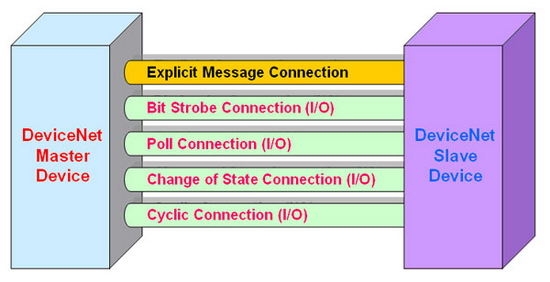Note that before communicating I/O data with DeviceNet slave devices, the Master device must connect to slave devices by explicit message connection to define the connection object. Here, we only provide one explicit message connection and four I/O connections as depicted in the figure as shown below.

The DeviceNet communication protocol is based on the concept of connections method. Master should create connections with slave devices based on the command of exchanging information and I/O data. To establish master control mechanism, there are only four main steps to be followed. Figure 1.3-3 demonstrates the basic process for the DeviceNet master communication. The every step function is described in below:

- Add device into network
You should provide the slave deviceˇ¦s MAC ID to add into network.
- Configure connection
You can check the slave deviceˇ¦s I/O connection type and the I/O data length. When configuring the I/O connection, you should provide these parameters.
- Establish connection
After configuring connections, users can start communicating with slave devices.
- Access I/O data
After communicating with slave devices, you can access the I/O data with corresponding read/write function.
After establishing the explicit connection, the connection path is then used to exchange the general information from one node to the others. And then users can create the I/O connections in the next step. Once I/O connections have been created, I/O data may be exchanged among devices in the DeviceNet network according to master device demand. Therefore, the master device can access I/O data of the slave devices by one of the four I/O connection methods. The library is not only easy to use but also providing a lot of the DeviceNet Master functions to retrieve and deliver the slaveˇ¦s I/O data.